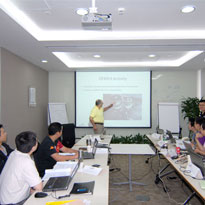iDEN™
- Course:iDEN™
- Course ID:IDEN Duration:4-5 days Where: Your Office (7+ Persons)
- Download Course Description (PDF)
Available as a private, customized course for your group at your offices or ours and in some cases as a WebLive(TM) class.
Course Outline
- Propagation models and their optimization in cellular networks
- Fundamental modeling assumptions and limitations
- Free space model: Why it works, or it doesn’t
- Plane earth model: Simple, good, but not perfect!
- Special propagation effects, e.g., water bodies, urban canyons, weather peculiarities, etc. and associated optimization issues
- Diffraction issues and counter measures: “Does it matter where the antenna is placed? How about its orientation?”
- Empirical propagation models, and their optimization/calibration, correct/optimal use and limitations
- Fading models and their correct use
- Fundamental modeling assumptions and limitations
- Long-term fading: How “long” is “long”?
- Short-term fading: How “short” is “short”?
- Long term versus short term fading as it impacts measurements and model optimization
- Fading in the time domain
- Fading in the frequency domain
- Fading countermeasures: In principle and in the actual iDEN system; what one can do in practice to combat fading
- Different mitigation techniques for different problems: Diagnosis before cure
- Link budget and associated pitfalls or why are the signal/coverage and/or interference patterns not as good as we expected?
- Link budget principles: Same as any other “budget”
- Receiver sensitivity
- Path balancing
- Antennas/cable mismatches and VSWR issues
- Fading margin calculations and its optimization tradeoffs
- Interference issues and mitigation
- Cochannel interference
- Adjacent channel interference
- Inter-modulation issues
- Putting iDEN™ in perspective
- iDEN: A historical and regulatory perspective
- Communication protocol stack
- Physical layer in iDEN: Its strengths and weaknesses or how to capitalize on its strengths and deal with its weaknesses
- Layer 2 and Layer 3 message structures: How messages are created, transmitted, and received. Impact on optimization issues
- Speech coding
- Speech coding concepts
- Speech coding schemes used in iDEN and impact on optimization/blocking probability
- Optimization issues related to traffic engineering and resource availability
- Traffic engineering principles
- Erlang B, Erlang C and Poisson models vis-à-vis interconnect and dispatch traffic as used in iDEN
- Error control coding
- Error control coding concepts
- Error control coding for iDEN
- Optimization capabilities and limitations resulting from error control coding schemes used in the system
- Relationships between “Actual” Error rates, “Measured” Error rates, SQE, RSSSI, etc.
- Digital modulation techniques: General concepts and limitations/impact on optimization issues
- Modulation and channel structure in iDEN™
- Spectrum allocations and channelization
- iDEN RF carrier and modulation structure
- TDMA framing structure
- Logical channels and their relationship to the RF carrier(s)
- Camping algorithm and call processing and associated optimization issues
- Measurements, measurement reporting, and corresponding handover considerations and associated optimization issues
- Performance/optimization issues
- Specific to the Random Access Channel and its parameters
- Specific to the Paging Channel and its parameters
- Specific to unique propagation characteristics, such as large water bodies, water and mountain combination, dense urban areas, etc.
- Conclusion: Summary and Q&A session
Course in a Nutshell
Unlike many other wireless technologies, iDENTM is a proprietary technology developed by Motorola. While less widely deployed than other technologies, iDENTM was the first to bring “push-to-talk” to a sizeable market.
The goal of this intermediate-to-advanced course, which assumes some existing familiarity with iDENTM, is to undertake an in-depth exploration of all aspects of the iDENTM technology. Discussed are issues related to the design, operation, optimization, and troubleshooting of iDENTM networks – including the major parameters and the associated tradeoffs. The course will allow you to evaluate solution approaches, anticipate performance problems, and identify ways of resolving them before they start to affect the network performance.
Customize It!
You can have us customize this course at little-to-no additional cost to your specific needs. We offer distinct versions tailored for audiences such as:
- Network design and optimization engineers
- Equipment or application designers
- Less technical audiences such as managers, executives, business planners, sales and marketing specialists, and operations and support personnel
Aimed At
Technical personnel with some prior exposure to iDEN™ or other 2G wireless technology who wish to study iDEN™ in depth.
Prerequisites

